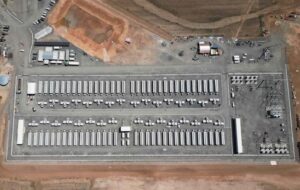South Australia transmission company ElectraNet says it has signed a connection agreement with the developers of a new 200 MWh battery storage project as the state surges towards its fast-tracked target of 100 per cent renewables by 2030.
ElectraNet announced on Wednesday that the connection agreement has been signed for 100MW / 200MWh Mannum battery, to be located next to the local substation, and close to the company’s existing solar farms.
It will be built at a cost of around $130 million, and should begin construction this year and be complete by the end of 2025.
“This is another exciting development from our customer that is moving South Australia towards its net renewables target,” ElectraNet said in a statement.
South Australia is already a world leader on the uptake of wind and solar, with an average share of 71 per cent of the gigawatt-scale grids average demand over the past year.
On Tuesday, the state government – responding from predictions form the likes of ElectraNet and the Australian Energy Market Operator – confirmed that it had fast-tracked its official target of “net” 100 per cent renewables from 2030 to 2027, to reflect the scale of the wind, solar and battery projects in development.
The two companies said connecting battery projects of this scale is “extremely complex” and they will continue to work on navigating the technical challenges and connection processes.
The Mannum battery is proposing to use Canadian Solar and e-Storage’s proprietary SolBank battery solution, which is based on lithium iron phosphate (LFP) battery cells.
“Epic Energy is excited about South Australia’s energy transition and is committed to leveraging our innovation and expertise in energy infrastructure to develop renewable energy projects that that support the clean energy transition,” the company’s head of project development Tom Forde said in a statement.
“Accordingly, we are investing in a portfolio of other renewable energy assets, with infrastructure ranging from wind and solar farms in regional parts of South Australia and across the country, to microgrids and standalone storage.”










